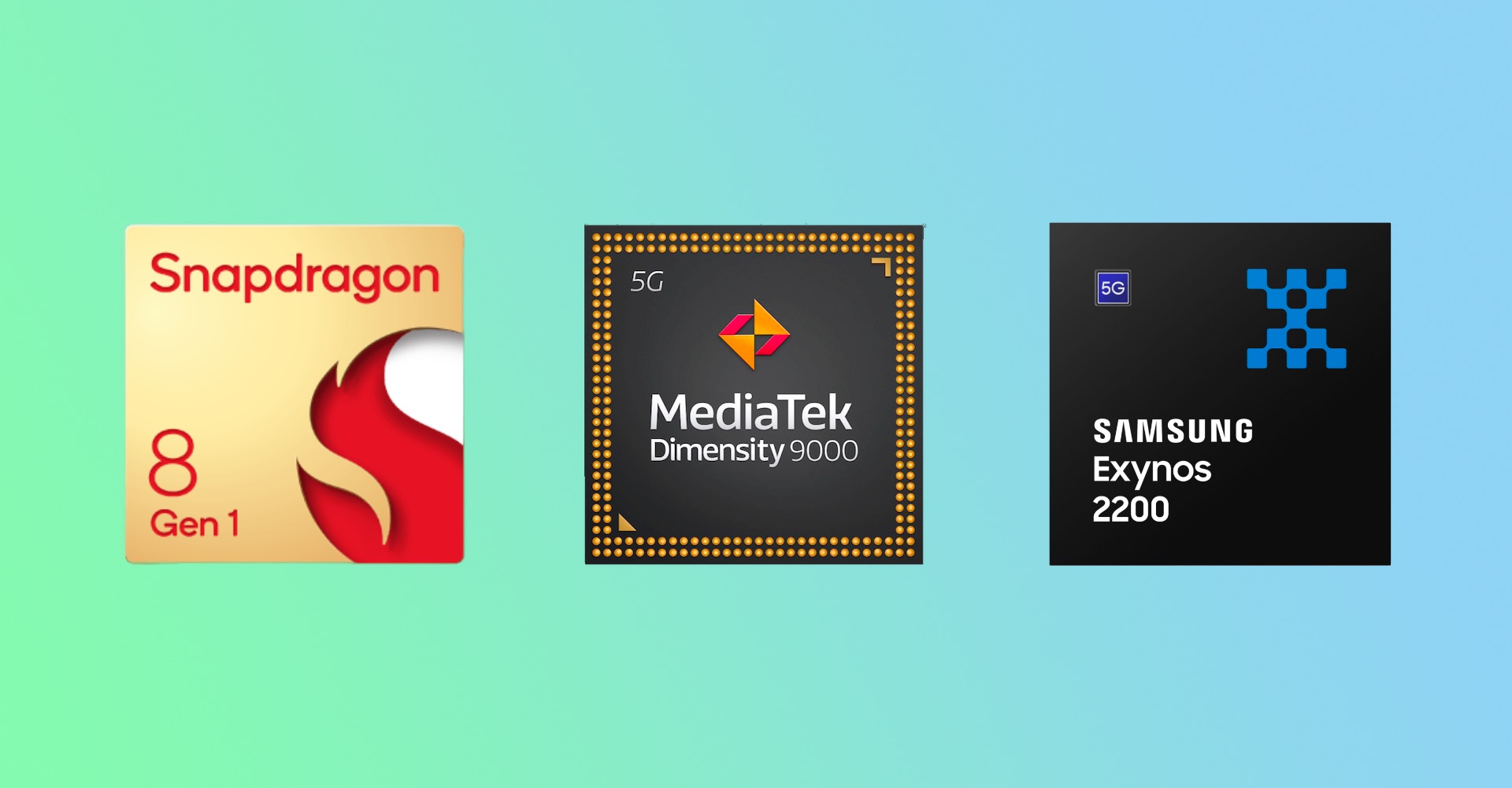Let’s look at an on-paper Snapdragon 8 Gen 1 vs Exynos 2200 vs Dimensity 9000 comparison.
Snapdragon 8 Gen 1 vs Exynos 2200 vs Dimensity 9000 specs:
| Qualcomm Snapdragon 8 Gen 1 | Samsung Exynos 2200 | Mediatek Dimensity 9000 |
| CPU | 1x Cortex-X2 @ 3GHz 3x Cortex-A710 @ 2.5GHz 4x Cortex-A510 @ 1.8GHz | 1x Cortex-X2 3x Cortex-A710 4x Cortex-A510 | 1x Cortex-X2 @ 3.05GHz 3x Cortex-A710 @ 2.85GHz 4x Cortex-A510 @ 1.8GHz |
| GPU | Adreno | Xclipse 920 AMD RDNA2 cores | Arm Mali-G710 MC10 |
| Display | 144Hz at QHD+ 60Hz at 4K | 144Hz at QHD+ 120Hz at 4K | 180Hz at FHD+ |
| Machine learning | Hexagon | Dual-core NPU + DSP | APU 5.0 six cores |
| Modem | 10Gbps download (mmWave) Sub-6GHz speed unknown 3GPP Release 16 5G | 7.35Gbps download (mmWave) 5.1Gbps download (sub-6GHz) 3GPP Release 16 5G | 7Gbps download (sub6GHz) 3GPP Release 16 5G |
| Camera | 200MP single 64MP+36MP dual 36MP+36MP+36MP triple 8K/30fps HDR recording | 200MP single 64MP+36MP dual 8K/30fps, 4K/120fps, 4K HDR recording | 320MP single 32MP+32MP+32MP triple 8K/24fps recording 4K HDR Video |
| Video Playback | 8K H.264, H.265, VP9 decode | 8K AV1, H.264, H.265, VP9 decode | 8K AV1, H.264, H.265, VP9 decode |
| RAM | LPDDR5 | LPDDR5 | LPDDR5X |
| Connectivity | Bluetooth 5.2 Wi-Fi 6E | Bluetooth 5.3 Wi-Fi 6E | |
| Process | 4nm Samsung | 4nm Samsung | 4nm TSMC |
CPU and GPU performance
Snapdragon, Exynos, and Dimensity all use the same CPU cores and 1+3+4 layout, we’re expecting a similar level of performance. We may see a couple of benchmark percentage points between them due to clock speed and cache differences, particularly as Mediatek uses the superior TSMC 4nm manufacturing process rather than Samsung 4nm. But the core experiences will likely feel almost identical between all three — barring any glaring overheating or throttling issues, of course. It is also worth noting that Mediatek supports slightly faster LPDDR5X RAM than its competitors, although it will be down to partner devices to make use of this little extra potential.
Mediatek’s Dimensity 9000 is the most well-known quantity, opting for an Arm Mali-G710 MC10 GPU that promises a 35% performance boost over last gen’s Snapdragon 888. We know less than ever about Qualcomm’s latest Adreno GPU as the company has dropped the numbering from its naming convention. All we know is that it boasts 30% faster rendering than its previous generation, with Samsung introducing hardware-backed ray tracing.
Samsung’s Exynos 2200 potentially offers the most radical change to mobile graphics in generations. The Xclipse 920 GPU sports the same AMD RDNA2 architecture powering the PlayStation 5 and Xbox Series consoles and high-end PC graphics cards. In a major first for mobile, hardware-based ray tracing also finds its way into the Exynos 2200 GPU, which will certainly be more potent than Mediatek’s software support.
